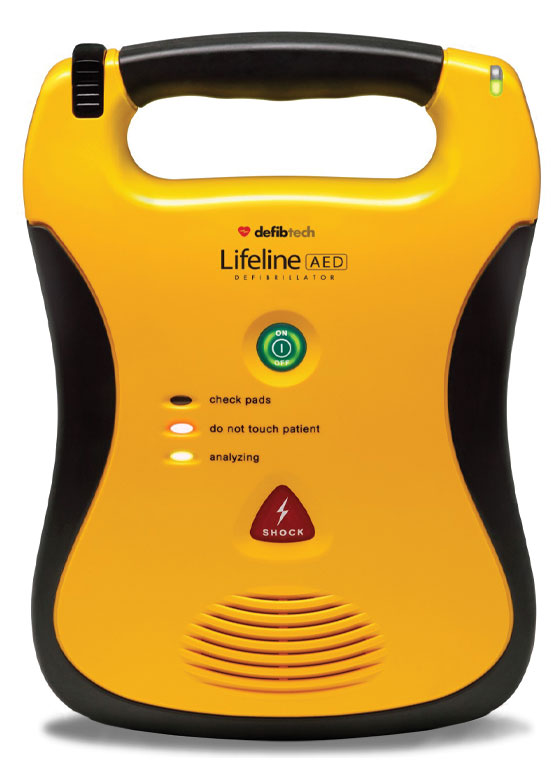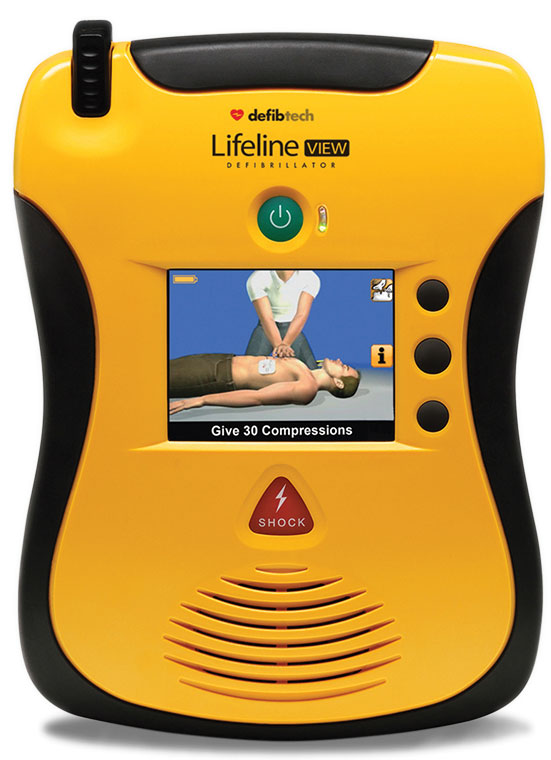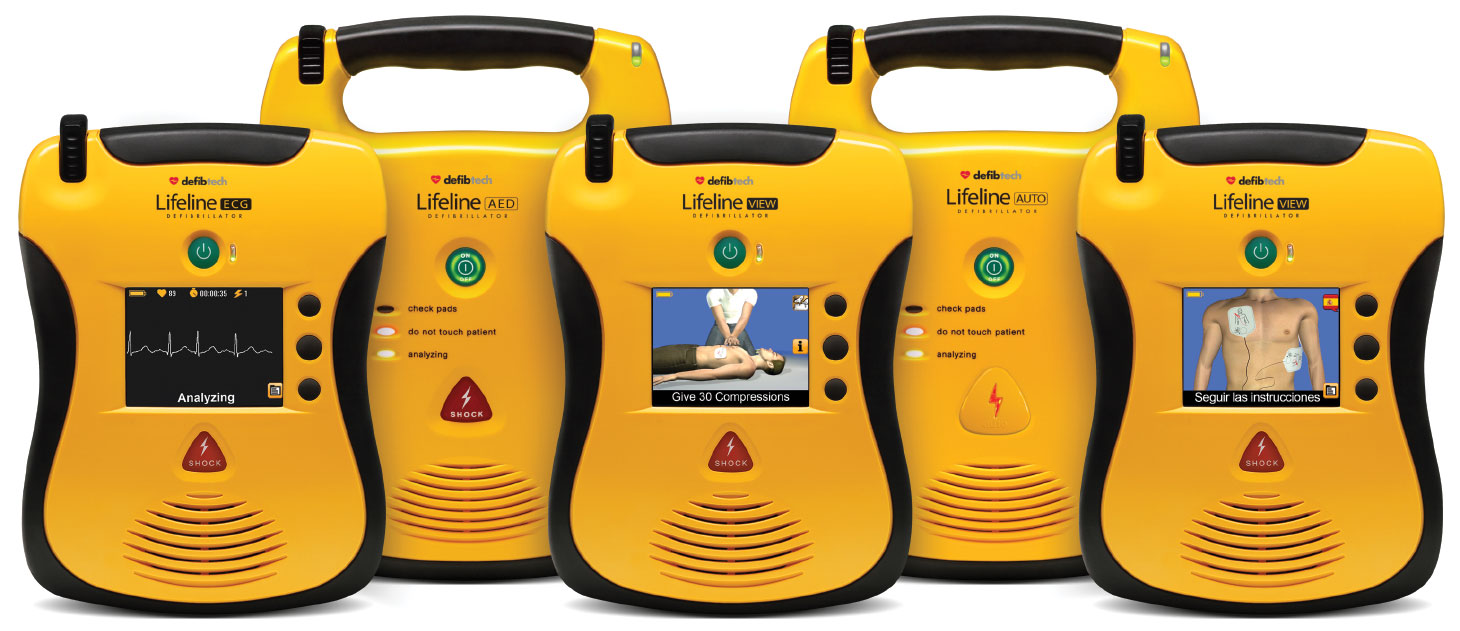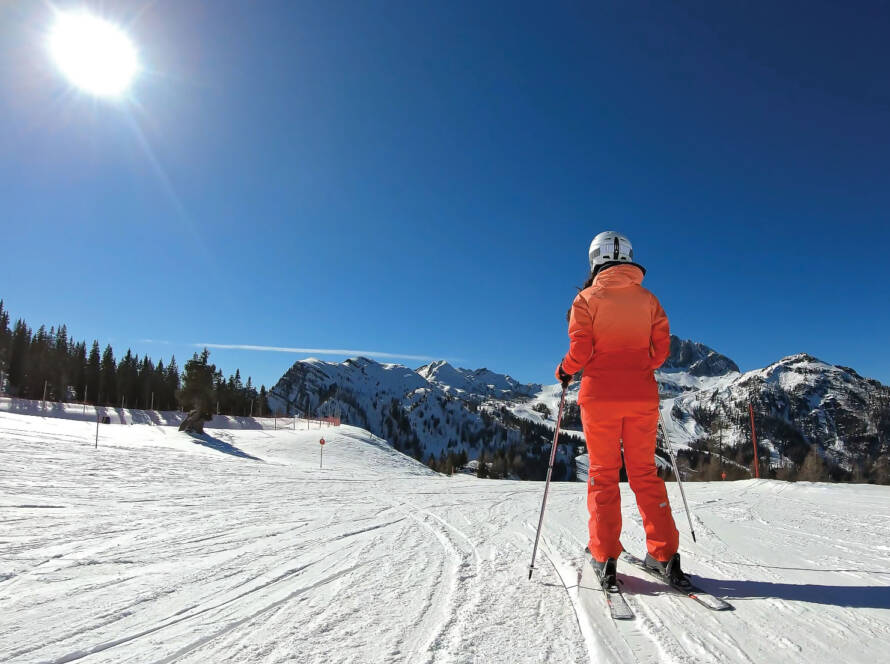Ski areas and resorts usually operate over many miles of hidden slopes and hills. So, in time-sensitive emergencies, like sudden cardiac arrest (SCA), accessibility is critical, and the first responders to show up are not always medical professionals.
“When someone experiences SCA, it’s very time sensitive and a critical emergency,” said Mike Papale, community relations manager at Defibtech. “CPR should happen immediately, and an automated external defibrillator (AED) should ensue no more than three minutes afterwards.”
Defibtech designs and manufactures lifesaving resuscitation devices, including AEDs, mechanical chest compressors and other related accessories. An AED is a portable medical device that connects two pads to the patient’s chest and analyzes the heart rhythm, determining whether the patient requires a shock.
Headquartered in Guilford, Conn., Dr. Glenn W. Laub, a cardiothoracic surgeon and his long-time friend and fellow Yale University graduate, Gintaras Vaisnys, an engineer, founded Defibtech to help save more lives from SCA and create affordable AEDs for people around the world.
“They knew how important it was to develop a product that would save lives, but that was also affordable for small companies, organizations and businesses,” said Papale. “Because the more AEDs we have out there, the more lives we can save.”
An AED is a portable medical device that connects two pads to the patient’s chest and analyzes the heart rhythm, determining whether the patient requires a shock.
According to the American Heart Association, SCA kills over 350,000 people annually in the United States, which is almost 800 deaths a day.
“Cardiac arrest is when you have an abnormal rhythm or arrhythmia,” said Papale. “And it causes issues with the heart where it stops beating. So, when that happens, no blood flows throughout the body, and the patient stops breathing, so they can’t get oxygen to the brain. The oxygen and blood flow are what keep people alive.”
Papale says AEDs have the best chance of success when used within three minutes.
“Statistics state that when someone is shocked within one minute, they have a 90 percent chance of survival. Each minute after, without defibrillation, decreases their chances of survival by 10 percent,” he said. “So, while AED survival rates are very high, that unfortunately doesn’t always happen because the devices aren’t readily available for someone to use.”
Papale says that is why AEDs remain critical for everyone to have easy access to – especially on ski slopes due to the spread-out nature of the area.
“One of the intriguing things about ski resorts is that they have huge open spaces, and those spaces are not always readily accessible,” said Papale. “I’m sure ski resorts have AEDs. But, if we refer to the data: if an AED isn’t used on a patient within three minutes, the chances of survival start to drop.”
Papale says it’s an area where Defibtech wants to raise awareness due to the sometimes extreme, heart-racing nature of winter sports.


“Raising awareness around SCA and AEDs, and how many should be available and where to place them – to ensure that if someone did go into SCA on the mountain while they were skiing, they have the absolute highest chances of survival – is important to understand.”
A good rule of thumb, he says, is to ensure the AED can be accessible within three minutes of any direction.
“At a ski resort that’s outside and in extreme temperatures, it can be tricky,” said Papale. “Now, there are temperature-controlled cabinets you could put them in. But I think the most important thing for a ski resort to keep in mind is having as many as it would take to ensure that if someone went into cardiac arrest on any part of the mountain, an AED could be there within three minutes.”
Two of Defibtech’s most popular AEDs are the original Lifeline AED and Lifeline VIEW AED. “The Lifeline AED is a very simple device,” said Papale. “It has a nice handle, a visible green ‘on’ and ‘off’ button, and an orange triangle ‘shock’ button – it’s one of our best products and available in Spanish.”
Papale says the Lifeline VIEW AED is slightly smaller than the Lifeline AED and lighter.
“What’s cool about the Lifeline VIEW AED is it has a screen on the front, directing the user on what to do,” said Papale. “It’s a personal coach by their side offering step-by-step instructions, in full-motion color video, the user can follow along to. It’s a high-stress situation, so this helps make it more manageable.”
Defibtech’s AEDs aim to be as straightforward and user-friendly as possible due to the high-stress situation of someone going into SCA. “We believe AEDs save lives, so any AED is a good AED,” said Papale. “However, some of the product features we like are the easy-to-use functionality and portability.
Papale says that while there are always certification classes on CPR and first aid, AEDs require no training for the user.
“Our AEDs are bright yellow with a handle, which makes them easy to see, locate and grab. Very simple with only an ‘on’ button and ‘shock’ button because the goal is when someone goes into SCA, someone who is not a medical professional can tend to the person waiting for medical help.”
Papale says that while there are always certification classes on CPR and first aid, AEDs require no training for the user.
“The only thing you would ever have to do is turn the AED on,” said Papale. “As soon as it’s on, it will provide voice instructions, meaning if a shock is required, the AED will guide the user through saving the person’s life.”
The set-up is even simpler for Defibtech’s AEDs: open the box, plug the AED in and install the battery. Defibtech offers five and seven-year battery pack options for the Lifeline AED, while the Lifeline VIEW AED has a four-year battery.
“The batteries are not rechargeable, and you will have to replace them,” said Papale. “The AED self-tests, but we suggest someone check it monthly to ensure it’s not beeping and that the pads are plugged in, so the AED is ready to be used if needed. I mean it takes 30 seconds to warm up, but simply put, the device is ready to save someone’s life.
“Whenever we sell an AED, we hope no one ever has to use it. At the same time, we hear from people who have had to use them in emergencies, and they’re very thankful for how easy it was to use. All they had to do was turn it on and it was able to save a life.”



![[image placeholder]](https://www.snowopsmag.com/wp-content/uploads/2023/09/placeholder@2x-890x664.png)
